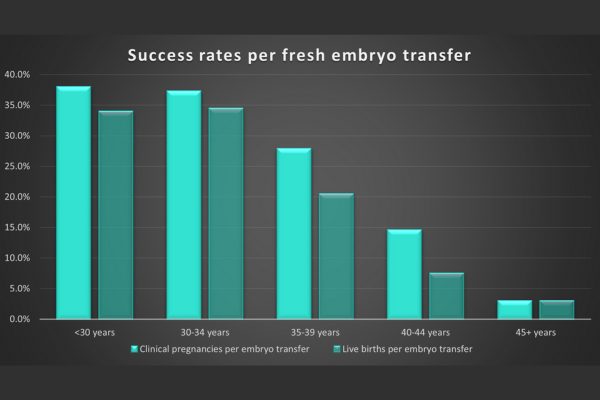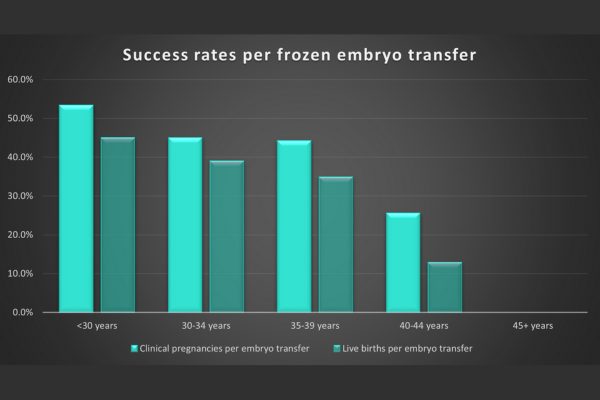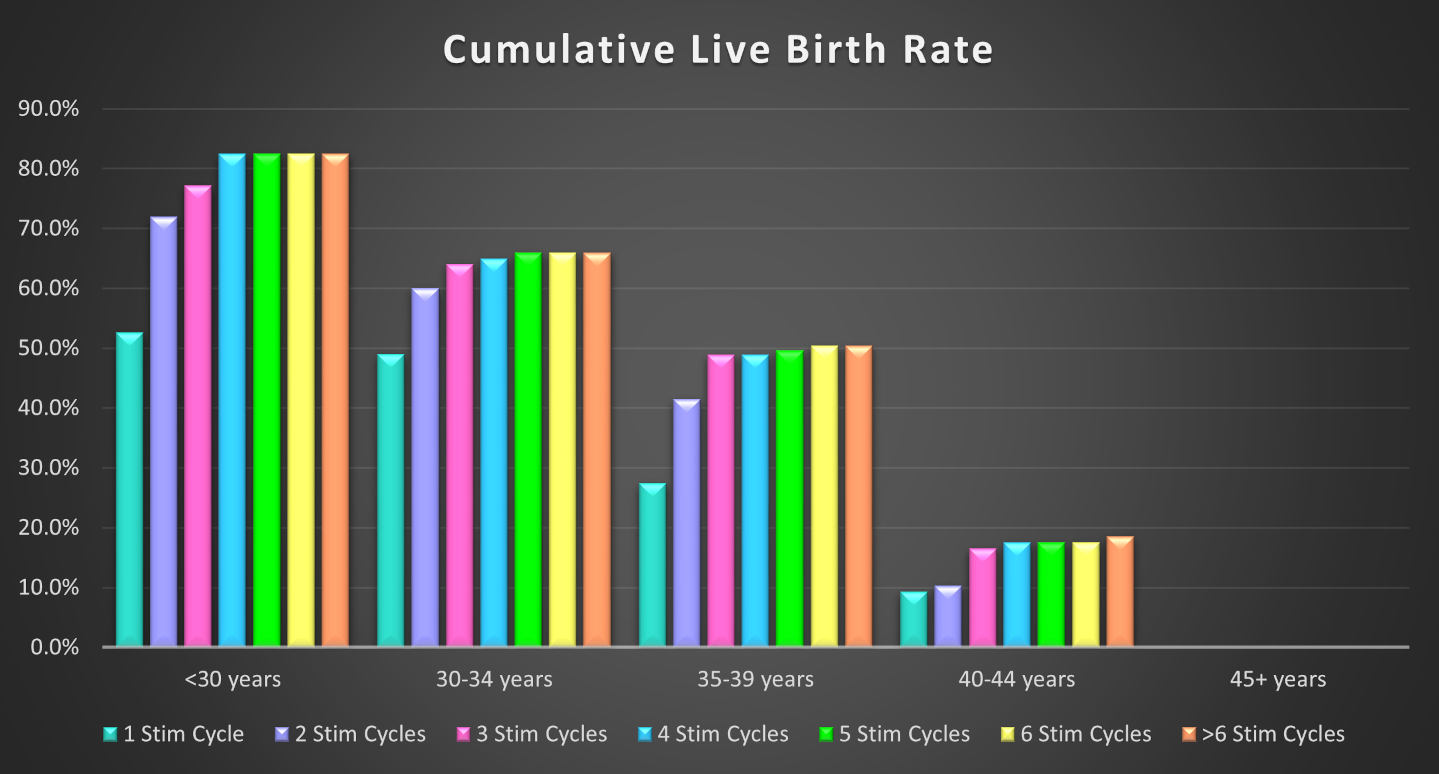Connect IVF Success Rates - 2021-2023
Chance of success in an IVF treatment cycle will depend upon individual circumstances, with the biggest factors affecting success being age, weight, lifestyle choices and cause of infertility. Not every IVF cycle initiated will result in an egg collection, a fresh embryo transfer or embryos suitable for freezing. The data used to determine Connect IVF success rates include all patients utilising their own eggs, no PGD/PGT genetically screened embryos, and combines all insemination types (IVF and ICSI). For more information on how to interpret clinic success rates, please refer to the AccessAustralia document on how to choose an IVF clinic and understanding success rates, and YourIVFSuccess website.
Connect IVF opened its doors in June 2021.

Fresh Embryo Transfer Success Rate
The graph above displays the Connect IVF patients who had a fresh embryo transfer utilising their own eggs that resulted in a clinical pregnancy and a live birth including 2021 to 2023, in total 803 patients had a fresh embryo transfer. This graph does not include any subsequent frozen embryo transfer cycles that resulted after their initial IVF treatment. The live birth success rate ranges from 34.0% per embryo transfer for patients under 30 years of age, to 3.0% per embryo transfer for patients over 45 years of age.

Frozen Embryo Transfer Success Rate
The above graph displays the Connect IVF patients who had a frozen embryo transfer utilising their own eggs that resulted in a clinical pregnancy and a live birth up to 2023, in total 489 patients had a frozen embryo transfer. The live birth success rate ranges from 44.9% per embryo transfer for patients under 30 years of age, to 0.0% per embryo transfer for patients over 45 years of age.

Cumulative Live Birth Rate
The most important measure of success is to determine your chances of having a baby after each completed stimulated IVF cycle. With each completed stimulated IVF cycle eggs are collected and any resulting embryos from that cycle are used either fresh or frozen in subsequent transfer only cycles. The reality is that most people regardless of their age will not have a baby after their first cycle. It is important for all those wishing to engage in IVF treatment to be aware of this and be prepared for the reality of needing to engage in multiple cycles. Connect IVF has worked hard to make IVF treatment as affordable as possible for the reality that most will require multiple cycles.
In the graph above, you will see the data for Connect IVF patients who had their first stimulated cycle in 2021 or 2022, and we follow their cycle attempts to include any live births into 2023. As you can see, the younger you are when you commence treatment, the more likely you are to have a live birth and in as few cycle attempts as possible. The graph also shows how after four stimulated cycle attempts the chances of having a baby do not dramatically increase. This is the point at which a patient may consider other pathways to parenthood such as utilising our Donor Services Programme or addressing other health and fertility concerns before continuing treatment (if this was delayed attempting pregnancy with IVF first).
This data does not show those patients that discontinued treatment before achieving success, moved to another IVF provider, had a baby naturally or are still in the process of utilising their frozen embryos. The data set also does not include patients that have gone on to have another baby with Connect IVF’s assistance. While age is one of the major fertility factors measured, it is not the only contributing factor and this graph demonstrates averages for age group only.
Request a consultation
Your information is private and confidential. We will not share any of your personal details.